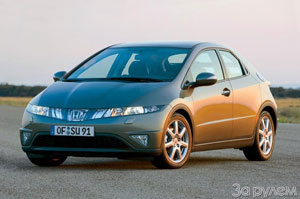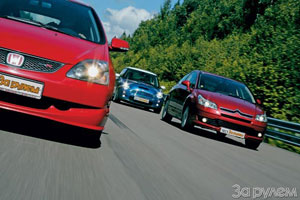Test drive Honda Civic sedan 2003 - 2005 sedan
The shadow of the samurai
Honda is famous for their reliability, but scare away with complexity: who knows if the used overseas technique of the new owner will ruin? After all, even the modest five-seven-year-old siviks are stuffed with original knots: this is a multi-leaf, independent suspension of all wheels with passive hersing of the rear, and the electron-hydraulic valves control system (VTEC), and automatic gearboxes of their own design, and even chain variator! And in the generation 1992-1996. There was a full -wheel drive version. How to be safe when buying and competently operating these cars, we were told by specialists of the FC Motors dealer Technical Center.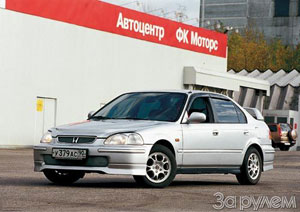 PEDIGREE
PEDIGREE The factories where the Siviks of the fifth and sixth generations gathered are scattered around the world. Officially, only Japanese assembly cars were delivered to Russia in the European configuration, and until 1996 - only with the D15B3 carburetor engine or the D15B2 mono -winging engine, without a neutralizer and lambda zond. However, thanks to the gray dealers in the Russian market, almost the entire lineup is represented.
Although there is no special eastern package for Siviks, we may have problems with someone else's car. If the machine was intended for a hot and dry climate, an oil filter sealing ring in Russia can be so strangled that it will lose tightness. And hot oil under pressure flows quickly! Therefore, elastic bands on such machines are special attention, and it is better to immediately replace the filter from sin away. Another problem is anticorus. Why is he in the edge of sand storms? American and Canadian versions are suitable for us, but some body details are original - it is not easy to find a replacement. The same with the station wagons are popular in Europe, for some reason they did not take root in Russia. Even less all -wheel drive cars, although there were no complaints about them. But the five -door hatchbacks from England (they were released only there) - a lot, although they were not officially sold with us.
Two enemies
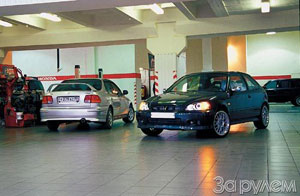 Legends are added to the durability of the Honda engines. Therefore, sellers often do not hide two hundred thousand runs - with good care, even forced engines (for example, B16A2 gives out 100 liters from a liter) often serve more than 300 thousand km. Chronic diseases in the injection and carburetor engines are absent. They have only two serious enemies - poor oil and overheating.
Legends are added to the durability of the Honda engines. Therefore, sellers often do not hide two hundred thousand runs - with good care, even forced engines (for example, B16A2 gives out 100 liters from a liter) often serve more than 300 thousand km. Chronic diseases in the injection and carburetor engines are absent. They have only two serious enemies - poor oil and overheating. Honda engines are collected according to selective technology: the details in the pair are selected individually. Hence the minimum gaps in the mating and a high resource. When using mineral oils, the parts are covered with low -temperature deposits, which can lead to oil starvation and even jamming. We turn off the cork of the oil -polling neck and draw a finger along the inner surface of the timing cover. A crust impregnated with a vacation will tell you: the engine lived hard. Washing will help to remove part of the dirt, but after it the oil will have to be changed twice - after all, after the drain in the system, about 1 liter of oil remains, and high -speed Honda motors are very demanding on its quality.
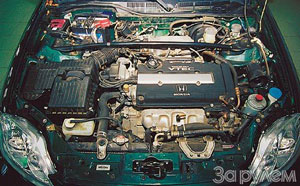 To avoid blockages and not suffer with flushing, use synthetics or semi -synthetics, the benefit of a relaxing oil consumption is almost invisible even with large runs. (However, if you regularly drive the tachometer arrow into the red zone, you will have to get the probe more often - do not wait for miracles!) We change the oil at least once a year or every 10 thousand km.
To avoid blockages and not suffer with flushing, use synthetics or semi -synthetics, the benefit of a relaxing oil consumption is almost invisible even with large runs. (However, if you regularly drive the tachometer arrow into the red zone, you will have to get the probe more often - do not wait for miracles!) We change the oil at least once a year or every 10 thousand km. It is difficult to overheat a working motor. Often the cooling system turns out to be a victim of negligence (a blood clot from frozen sealant, left liquid, a thermostat not replaced on time, a pierced hose, etc.). When buying, let's pay attention to the upper hose coming from the radiator. If he was leaving, the previous owner probably traveled with a faulty thermostat. We will open the radiator plug (only on a cooled motor!) - there should not be a snot on it. A muddy or rusty coolant is also an alarming symptom. Then we will definitely look under the engine: if on its rear surface near the cranks of the crankshaft (near the drainage opening of the pump), drops of liquid or white plaque are visible, the pump replacement is coming. This is at least an occasion for bargaining. The mosquito mosquito in the air intake or nylon tights stretched to the frame will help protect the radiator from dirt.
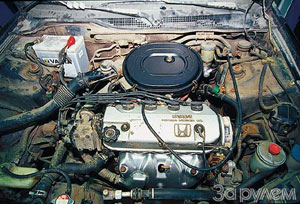 If you feed the motor with the right liquids and not save on filters, it will require a little attention. Every 40 thousand km - checking gaps in timing, every 100 thousand km - replacing the belt. The candles do not resist domestic gasoline for long, but the electrobenza pump and nozzles digest it. However, since the car drove around Russia, it is worth taking out the gas pump and inspect the tank from the inside: if the bottom is a muddy slurry, it is better to remove it and wash it - save on a tow truck. But in appearance nozzles are usually quite efficient. They do not need to prevent them prophylactically, but when diagnosing the engine, it is worth paying attention to the injection time. However, its increase against the norm does not necessarily indicate a malfunction of the nozzles - the reason may be in the suction of extraneous air.
If you feed the motor with the right liquids and not save on filters, it will require a little attention. Every 40 thousand km - checking gaps in timing, every 100 thousand km - replacing the belt. The candles do not resist domestic gasoline for long, but the electrobenza pump and nozzles digest it. However, since the car drove around Russia, it is worth taking out the gas pump and inspect the tank from the inside: if the bottom is a muddy slurry, it is better to remove it and wash it - save on a tow truck. But in appearance nozzles are usually quite efficient. They do not need to prevent them prophylactically, but when diagnosing the engine, it is worth paying attention to the injection time. However, its increase against the norm does not necessarily indicate a malfunction of the nozzles - the reason may be in the suction of extraneous air. In terms of reliability, carburetor engines are not inferior to injection, only numerous hoses, axes and diaphragms require care. It is enough to treat the hoses once a year with silicone drugs that restore elasticity, and metal moving compounds with easily perceptive lubricants with anti -corrosion effect. In no case do not try to adjust the complex system by pumping: to restore the initial position of the tuning screws - the puzzle even for professionals.
If the rumble from the ignition distributor appears, check the timing belt tension - due to the angular vibrations of the camshaft, the backlash in the slots turns into a knock. If the roar did not disappear, the bearing of the rotor may be worn out.
Mechanics, automatic or variator?
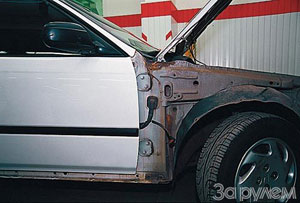 Sivik boasts an enviable variety of gearboxes. Mechanics are traditionally popular - in Russia, about 95% of the fifth generation and 80% of the sixth are equipped with it. There are no complaints, although the boxes are 1992-1996. Satisfied with ordinary 10W-40 engine oil. Since 1996, Honda has recommended a special oil for MTF handicrafts (Manual Transmission Fluid), its use in old boxes is not forbidden. The clutch with the hydraulic drive does not have weak places - it serves more than 150, and sometimes 250 thousand km.
Sivik boasts an enviable variety of gearboxes. Mechanics are traditionally popular - in Russia, about 95% of the fifth generation and 80% of the sixth are equipped with it. There are no complaints, although the boxes are 1992-1996. Satisfied with ordinary 10W-40 engine oil. Since 1996, Honda has recommended a special oil for MTF handicrafts (Manual Transmission Fluid), its use in old boxes is not forbidden. The clutch with the hydraulic drive does not have weak places - it serves more than 150, and sometimes 250 thousand km. Original Honda automatic transmissions are famous for reliability and irresistibility. Unlike traditional planetary automatic machines, they are built according to the scheme of ordinary boxes, so they are relatively cheap in repair - a maximum of $ 700-800. But it is almost impossible to find a replacement for disassembly: four types of machine guns with different gear rates were produced for siviks. To prevent the box, change the oil (ATF Premium, Dexron II or III) more often, at least once every 30 thousand km, since less than half can be drained without disassembling the unit.
CVT variator gearbox is a highlight of Honda. It allows not only to play 1.7 s at a machine gun at a distance of 400 m, but also 0.1 s for mechanics. In addition, the fuel is saved (ZR, 1999, No. 2, p. 26). It is easiest to distinguish a car with a CVT by a program selector: a series for automatic transmission-P-R-R-N-D3-D2-D1, and for CVT-P-R-R-N-D-S -L. The reliability of the variator on Sivica is beyond suspicion - in the company oil ATF Z1, it will pass more than one hundred thousand. A multi-zone steel pushing (!) The belt works well even on heavier HR-V (see ZR, 2003, No. 12). Unless the trophy-raids on Russian off-road and the race from a traffic light to a traffic light are able to disable the variator.
Counting on bones
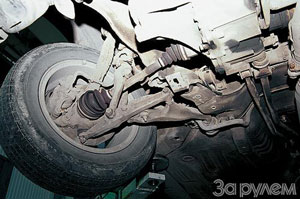 Shruses - inner trifle, outer ball - almost eternal, provided that their covers are integral. As a rule, the first (after 5-7 years of operation) external anthers are handed over. We replace them, without waiting for the cracks on the bends, turn into holes.
Shruses - inner trifle, outer ball - almost eternal, provided that their covers are integral. As a rule, the first (after 5-7 years of operation) external anthers are handed over. We replace them, without waiting for the cracks on the bends, turn into holes. The bearings of hubs on fifth-generation machines almost did not cause problems, but on the sixth the front ones can be asked to replace 80-160 thousand km, the rear-to 120-200 thousand. Fashionable external tuning today leads to early repair. Widely arranged wheels not only sand arches and doors, but also kill the bearings. If the wheels departure are 35 mm and smaller (about 50 mm in full -time), immediately buy a kit of bearings in reserve. Yes, and the replacement operation is by no means cheap - you will have to remove the turning point.
Both the front and back suspensions of Siviks very rarely require attention. The upper ball support serves more than 150 thousand km (changes in the assembly with a lever), the lower one - more than 200 thousand. Silent-blocks will survive the car, only after 6-10 years of operation, it may have to be replaced by the racks of the reptile stability stabilizer.
Silent blocks of the longitudinal levers of the rear suspension can be called a weak link only conditionally - they are the first to surrender, but before more than 150 thousand km. Fortunately, even their gap does not threaten their gap, but do not wait for the famous Honda handling, and the knocks will be tortured.
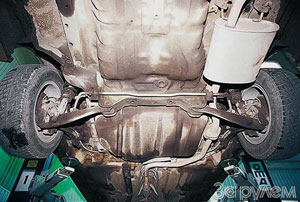 After replacing the parts, do not forget to adjust the angles of the wheel installation - both front and rear. By the way, only the convergence is regulated in front, so when buying special attention - the body: the rubber will not give the rubber unnecessary during the repair of the spar.
After replacing the parts, do not forget to adjust the angles of the wheel installation - both front and rear. By the way, only the convergence is regulated in front, so when buying special attention - the body: the rubber will not give the rubber unnecessary during the repair of the spar. There are no complaints about the steering. Tips of rods serve more than 120 thousand km. The rake does not flow, only with solid runs (150 thousand km) sometimes it is necessary to adjust the gap in the engagement (no more complicated than in Samara, the main thing is not to pull!). The ATF cannot be poured into the hydraulic wrap - how many expensive units of Zaporoto out of ignorance! The replacement of special Honda fluid is not provided, but with a suspicious smell and color it is better to be safe. They change it with a consistent substitution (it will take 1.5-2 liters) without analyzing the system (ZR, 2003, No. 4, p. 246).
The brakes are tenacious and reliable. With whole anthers, guides do not acidify for years, but fluid leakage through the cuffs when pistoning pistons (brake mechanisms Lucas) is not an excessive reason. There can be two perpetrators of poor braking of the rear wheels: the valve distribution of the force on the motor shield and the disturbed gap between the stem of the main brake cylinder and the vacuum amplifier. The first is replaced, the second is regulated using a special device. When ordering the pads, be sure to indicate the VIN - the brake mechanisms are different.
AT THE BOTTOM
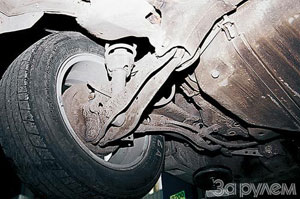 Eighty percent of the body panels are galvanized (except for the roof, rear racks, amplifiers for stiffness). Rusta on five -seven -year -old machines - as a rule, a sign of body repairs. The exception is the rear arches. If at least once a year, in the spring, they do not wash their cavities from salt and dirt that have accumulated there, a few years later, spider and dots will take the enamel. The situation is aggravated if the elastic band is lost that protects the joint of the arch and wing.
Eighty percent of the body panels are galvanized (except for the roof, rear racks, amplifiers for stiffness). Rusta on five -seven -year -old machines - as a rule, a sign of body repairs. The exception is the rear arches. If at least once a year, in the spring, they do not wash their cavities from salt and dirt that have accumulated there, a few years later, spider and dots will take the enamel. The situation is aggravated if the elastic band is lost that protects the joint of the arch and wing. There are almost no protruding details from below: the muffler is hidden in the tunnel, the pipelines are closed with protective casings, even under the bolts of security security in the spaces are provided for substetricians. The thresholds are protected from stones and borders with plastic overlays. But the front mudguards in Russia do not live for a long time - nevertheless, the landing with Siviks is low.
The electrician is almost trouble -free. Connections - with a triple seal on the connector and for each wire, the bundles are protected by plastic membranes. After several years of operation, the front electric windows begin to seize: the glass is overwhelmed on the rise, leaves the groove. The reason is in accumulated dirt: it is enough to clean and grease the guides with silicone spray, although sometimes you have to regulate the mechanism.
On other people's mistakes
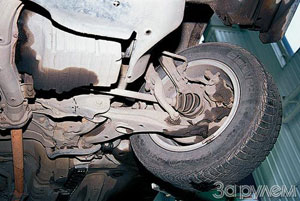 For all the complexity of Honda, it is quite friendly to mechanics: the specification is almost not required, all kinds of torxes-stars are also (aggregate repairs are not counted), so many hand-to-hand motorists themselves serve these cars for years. But, it happens, and they are burned ...
For all the complexity of Honda, it is quite friendly to mechanics: the specification is almost not required, all kinds of torxes-stars are also (aggregate repairs are not counted), so many hand-to-hand motorists themselves serve these cars for years. But, it happens, and they are burned ... When replacing the two -row bearing of the front hub, the inner ring often remains on the hub. Attempts to knock him down with a hammer will almost certainly leave the sick surfaces - then the new bearing will not last long, sometimes not more than 10-15 thousand km. There is a puller in the company service for this operation, while you will have to grind the sails. Crops from the gearbox are easily removed, but when they are installed, the oil seal is often damaged. You can’t buy it around the corner - therefore, it is better to entrust the operation to professionals. Many craftsmen, instead of replacing gaskets, strengthen them with sealant. This threatens the motor with a disaster: a sealant that has swam under pressure clogs lubricants - the VTEC system refuses, and not far from the wedge. In the roadside service, they do this all the way - where did the Honda gaskets come from? Alas, in Russia, the scourge of these cars is not expensive and not even gasoline, but brave masters of scrap and sledgehammer.
Carburetor engine D15B3 - Official
until 1996 in Russia.
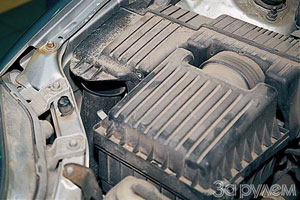 A two -school engine 1.6 liters (160 h.) Provides a spacer in standard configuration.
A two -school engine 1.6 liters (160 h.) Provides a spacer in standard configuration. The place of birth of the car is encrypted in the first three characters VIN: JHM - Japan, 1HG - USA, 2HG - Canada, SHH - UK.
Air fence - from above, from under the hood. The motor does not bread water from a puddle.
The radiator of the cooling system and the air conditioner condenser do not overlap each other air.
Information about the color, configuration, the size of the tires and the pressure in them - in the stickers on the left central rack.
In the suspension until 1996 there were forged levers ...
... After 1996, everything is only stamped. Reliability remained on top.
The rear reptile stabilizer was installed only on the most powerful versions. And with engines
1.4 liters were not put the front.
The rear multi -link suspension. The arrow shows the silent block of the longitudinal lever - it is given earlier than others.
Ice Toros left marks on the spaces - but even the protection of the highways remained untouched.
1996 car. Under the wing and threshold lining, the metal is not even touched by corrosion.
The history of the model
1991. The fifth generation of Honda Sivik is presented at the Frankfurt car dealership. The body is a sedan, a three -door hatchback, coupe, SHUTTLE. Engines - in -line, 4 -cylinder, 16 -valve, are located in front: carburetor 1.2, 1.3 and 1.5 l (including D15V4 - with two carburetors) with a capacity of 50 to 71 kW/from 68 to 96 l. p., with monovxing 1.5 liters, 66 kW/90 liters. With. and with distributed injection 1.5 and 1.6 l with a capacity of 75 to 118 kW/from 102 to 160 liters. With. Gearboxes - manual or automatic. There is a full -wheel drive version with Wyskoft in the rear bridge.
1994. Five -door hatchback. Engine 1.4 liters with distributed injection 66 kW/90 liters. With.
1995. A new generation with a partial update of engines gamma: the release of engines with monovxics and carburetor has been stopped. A 1.4 liter engine appeared, 55 kW/75 liters. With. The body design has changed, suspension. CVT variator transmission appeared.
1997. A new five -door hatchback is presented at the Geneva car dealership. The gamut of engines is expanded due to an injection 1.8 liter, 124 kW/ 169 liters. With. and a direct injection diesel (rover) 2.0 liters, 63 kW/86 liters. With.
1998. Universal (Aerodeck). Moldings on bumper and doors are painted in the color of the body.
year 2000. The debut on the Paris salon of the current, seventh generation of sivics.
Anatoly Sukhov. Photo: George Sadkov
Source: The magazine "Driving"







